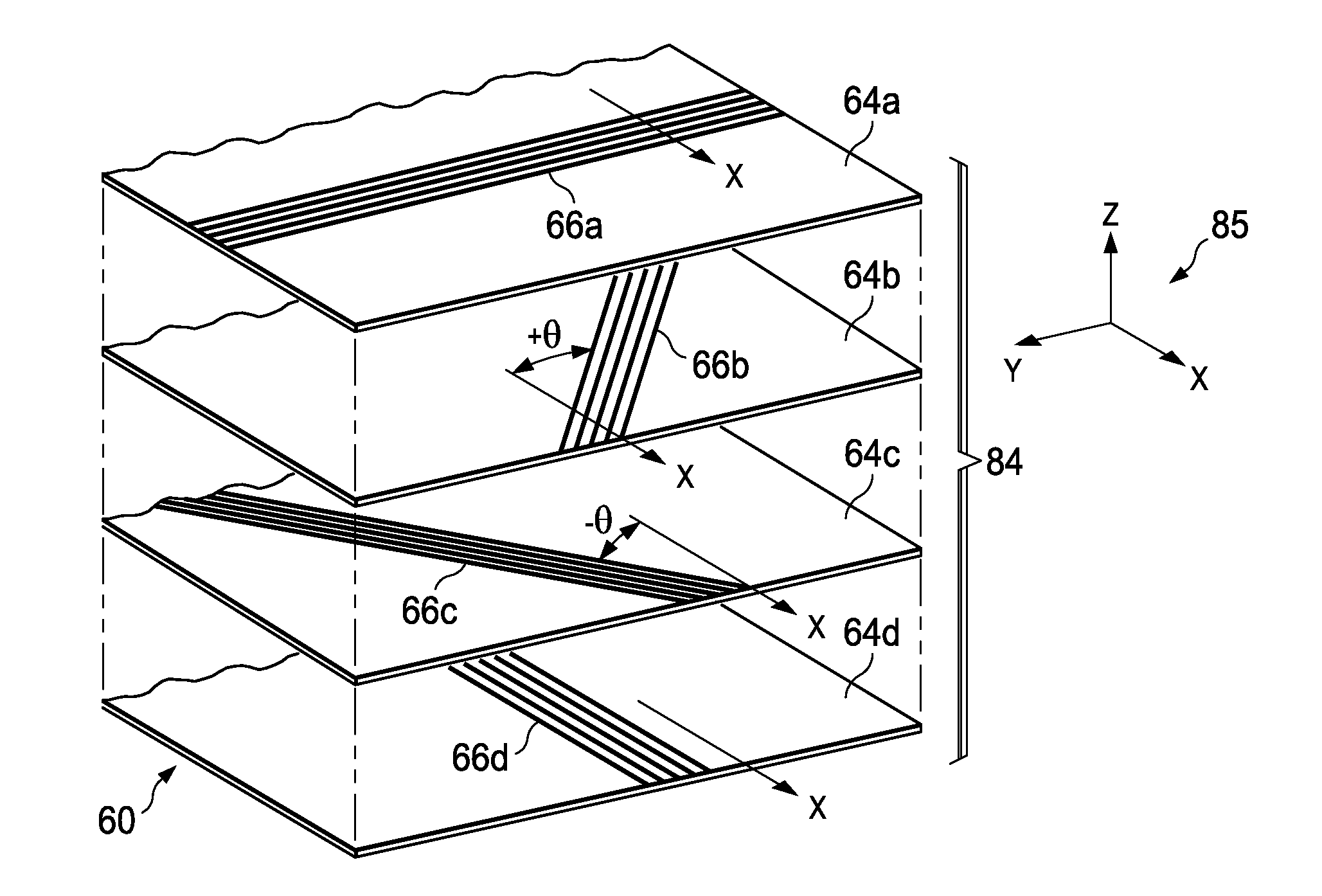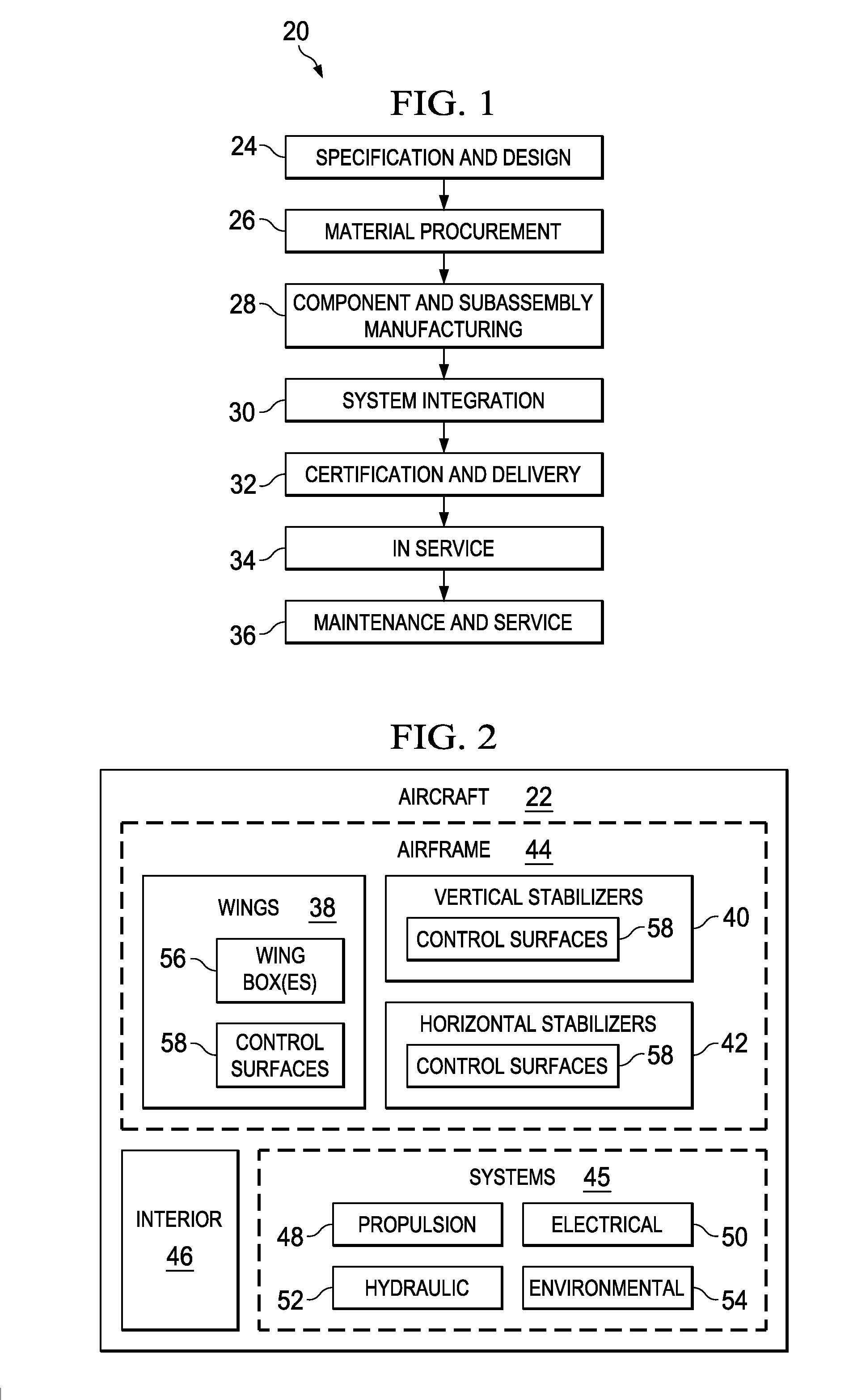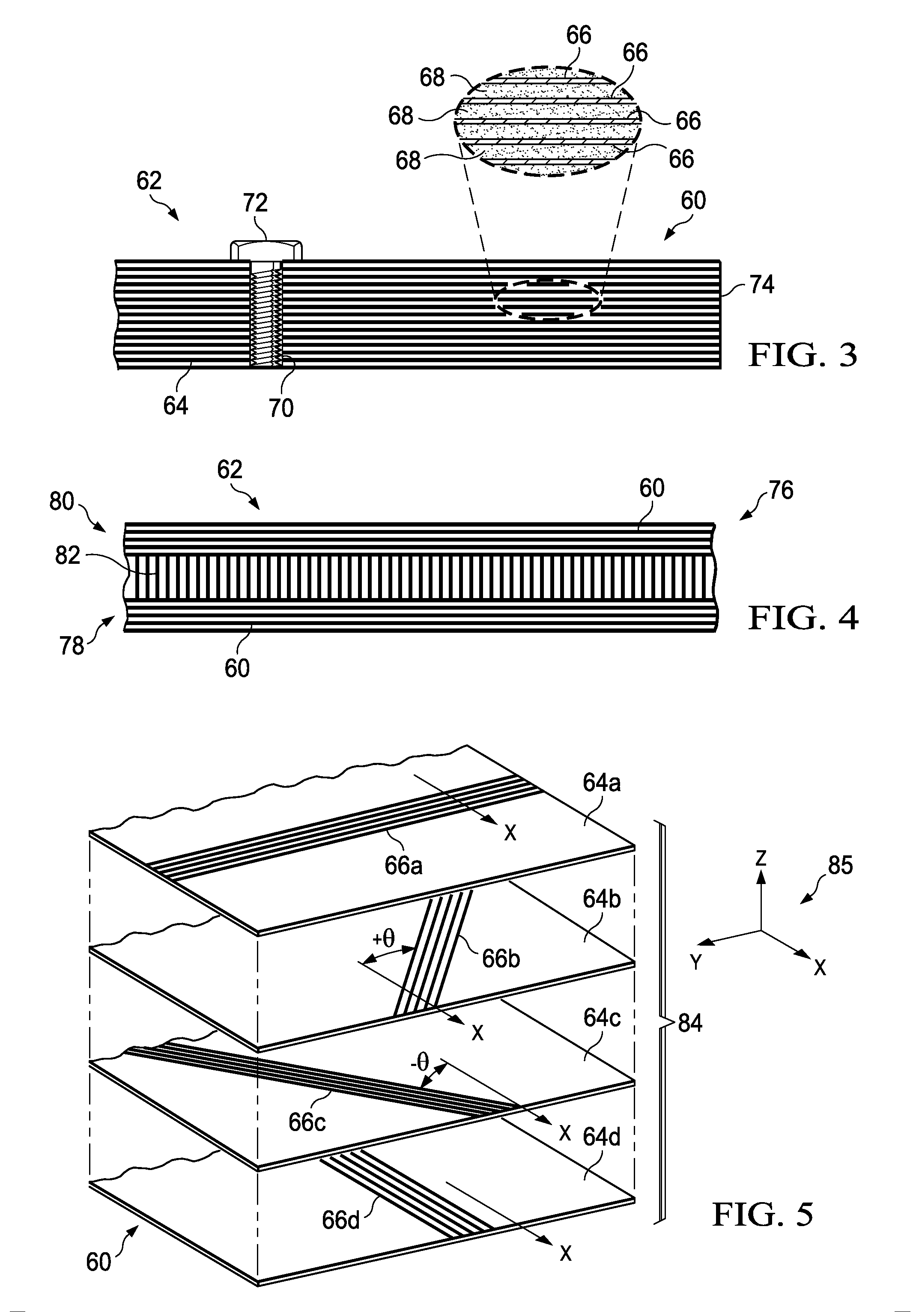Optimized Cross-Ply Orientation in Composite Laminates
a cross-ply orientation and laminate technology, applied in the field of composite laminates, can solve the problems of not fully optimizing to match performance requirements, skin that is heavier than desired for a particular application, etc., and achieve the effects of reducing weight, improving structural strength, stiffness and resistance to splitting and crack propagation, and reducing the weight of the structur
- Summary
- Abstract
- Description
- Claims
- Application Information
AI Technical Summary
Benefits of technology
Problems solved by technology
Method used
Image
Examples
Embodiment Construction
[0026]The disclosed embodiments relate to a composite laminate and related fabrication method that may be employed to fabricate any of a variety of composite laminate structures. The embodiments may find use in numerous fields, particularly in the transportation industry, including for example, aerospace, marine, automotive applications and other applications where light weight composite laminates are employed. Thus, referring now to FIGS. 1 and 2, embodiments of the disclosure may be used in the context of an aircraft manufacturing and service method 20 as shown in FIG. 1, and an aircraft 22 as shown in FIG. 2. Aircraft applications of the disclosed embodiments may include, for example, without limitation, skins (not shown in FIG. 2 but discussed later) forming part of wings 38, a vertical stabilizer 40 and horizontal stabilizers 42, all of which form part of an airframe 44. During pre-production, exemplary method 20 may include specification and design 24 of the aircraft 22 and ma...
PUM
| Property | Measurement | Unit |
|---|---|---|
| Angle | aaaaa | aaaaa |
| Angle | aaaaa | aaaaa |
| Angle | aaaaa | aaaaa |
Abstract
Description
Claims
Application Information
 Login to View More
Login to View More - R&D
- Intellectual Property
- Life Sciences
- Materials
- Tech Scout
- Unparalleled Data Quality
- Higher Quality Content
- 60% Fewer Hallucinations
Browse by: Latest US Patents, China's latest patents, Technical Efficacy Thesaurus, Application Domain, Technology Topic, Popular Technical Reports.
© 2025 PatSnap. All rights reserved.Legal|Privacy policy|Modern Slavery Act Transparency Statement|Sitemap|About US| Contact US: help@patsnap.com



